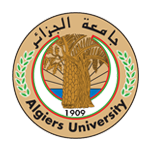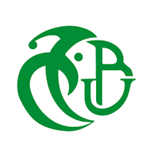Start Exploring African Medical Universities Now!
Welcome to the outstanding medical universities in Algeria, where you’ll discover an exceptional opportunity to pursue your medical education. Immerse yourself in a country renowned for its excellence in healthcare education and explore the diverse offerings these esteemed institutions provide.
The Medical Universities in Algeria stand as pillars of excellence in medical education. Renowned for their high academic standards, experienced faculty, and cutting-edge facilities, these universities are committed to delivering comprehensive medical programs that prepare students for thriving careers in healthcare. Studying medicine in Algeria is a gateway to world-class education and invaluable research opportunities.
Enrol today and embark on a journey of academic excellence and cultural immersion at the prestigious medical universities in Algeria. Experience the rich tapestry of medical education while shaping a successful future in healthcare.
Interested in studying in Africa?
Fill in your details & get a call back from our higher education experts.
Medical Universities in Algeria
The University of Algiers 1 (UA1) is a public university in Algeria. It was founded in 1909 as the École Supérieure d’Alger. It was renamed the University of Algiers in 1962 after Algeria gained independence from France. The university offers many programs, including medicine, engineering, and business. The university is located in a vibrant city. Algiers is a cosmopolitan city with a rich culture and history.
The University of Annaba, also known as Badji Mokhtar University-Annaba, is a public university located in Annaba, Algeria. It was founded in 1962, shortly after Algeria gained independence from France. The university is named after Badji Mokhtar, a national hero who fought for Algerian independence. The university has a student body of over 50,000 students and offers a wide range of undergraduate and graduate programs in a variety of fields, including engineering, science, medicine, law, and humanities.
The University of Constantine 1, formerly the University of Mentouri, is a public university located in Constantine, Algeria. It was founded in 1969 by the Algerian government. The university is spread over three campuses: the main campus in Constantine, the campus in Ain El Bey, and the campus in El Khroub. The university has a total of 18 faculties and institutes, offering a wide range of undergraduate and graduate programs. The university has a modern campus with state-of-the-art facilities.
The University of Oran was founded in 1961 as the National School of Medicine and Pharmacy. It became an independent university in 1967, and was the first university established after the independence of Algeria in 1962. The university is located in Oran, the second-largest city in Algeria. The university has undergone a number of changes over the years. In 1970, it was renamed the University of Oran 1. In 1992, it was divided into two campuses, the Es-Sénia Campus and the Belgaïd Campus.
The University of Blida was founded in 1962, shortly after Algeria gained independence from France. It was originally called the University of Blida-Cherchell, but the name was changed to the University of Blida in 2008. The university has a total of 25,000 students, including 1,500 international students. It has 12 faculties, which offer a wide range of undergraduate and graduate programs. The tuition fees at the University of Blida are very affordable. This makes it a great option for students from all backgrounds.
The University Center of Sétif was created in accordance with Executive Decree No. 133/78 of April 9, 1978 to accommodate 242 students spread over three institutes (Economics, Exact Sciences and Technology, and Foreign Languages).
In 1984 , the university center will see the birth of several National Institutes of Higher Education (INES), institutions enjoying administrative and financial autonomy.
In 1989 , the INES were grouped together to see the university institution now assign itself the status of University.






